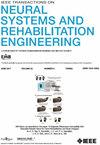基于肌肉协同和稀疏表面肌电信号的GAT-LSTM框架连续关节运动预测
IF 4.8
2区 医学
Q2 ENGINEERING, BIOMEDICAL
IEEE Transactions on Neural Systems and Rehabilitation Engineering
Pub Date : 2025-04-29
DOI:10.1109/TNSRE.2025.3565305
引用次数: 0
摘要
表面肌电信号在运动预测方面具有巨大的潜力,在康复、运动训练和人机交互等领域有着广阔的应用前景。然而,实现稳健的预测精度仍然是一个关键的挑战,因为运动预测中即使很小的不准确也会严重影响基于表面肌电信号的系统的可靠性和实用性。在这项研究中,我们提出了一个新的框架,基于肌肉协同(MS)的图注意网络(MSGAT-LSTM),专门用于解决使用稀疏表面肌电信号电极进行连续运动预测的挑战。通过利用MS理论和基于图的学习,该框架有效地弥补了稀疏表面肌电信号设置的局限性,与现有方法相比,在预测精度方面取得了显着提高。基于质谱理论,该框架计算不同肌肉肌电信号特征之间的余弦相似度来分配边缘权重,有效捕获它们对运动的协调贡献。该框架将用于关系特征学习的GAT与用于时间依赖性建模的LSTM网络集成在一起,利用了这两种体系结构的优势。在公共数据集Ninapro DB2和自收集数据集上的实验结果表明,MSGAT-LSTM在RMSE和R2方面的性能优于最先进的方法,包括肌肉解剖和基于ms的3DCNN, GCN-LSTM以及经典模型CNN-LSTM, CNN和LSTM。此外,实验结果表明,与GCN- lstm相比,将MS纳入GCN的训练时间减少了13%,显著提高了计算效率和可扩展性。这项研究强调了将MS理论与基于图的深度学习方法结合起来进行基于表面肌电信号的运动预测的潜力。本文章由计算机程序翻译,如有差异,请以英文原文为准。
Continuous Joint Kinematics Prediction Using GAT-LSTM Framework Based on Muscle Synergy and Sparse sEMG
sEMG signals hold significant potential for motion prediction, with promising applications in areas such as rehabilitation, sports training, and human-computer interaction. However, achieving robust prediction accuracy remains a critical challenge, as even minor inaccuracies in motion prediction can severely affect the reliability and practical utility of sEMG-based systems. In this study, we propose a novel framework, muscle synergy (MS)-based graph attention networks (MSGAT-LSTM), specifically designed to address the challenges of continuous motion prediction using sparse sEMG electrodes. By leveraging MS theory and graph-based learning, the framework effectively compensates for the limitations of sparse sEMG setups and achieves significant improvements in prediction accuracy compared to existing methods. Based on MS theory, the framework calculates cosine similarity between sEMG signal features from different muscles to assign edge weights, effectively capturing their coordinated contributions to motion. The proposed framework integrates GAT for relational feature learning with LSTM networks for temporal dependency modeling, leveraging the strengths of both architectures. Experimental results on the public dataset Ninapro DB2 and a self-collected dataset demonstrate that MSGAT-LSTM achieves superior performance compared to state-of-the-art methods, including the muscle anatomy and MS-based 3DCNN, GCN-LSTM, and classic models such as CNN-LSTM, CNN, and LSTM, in terms of RMSE and R2. Furthermore, experimental results reveal that incorporating MS into GCN reduces training time by 13% compared to GCN-LSTM, significantly enhancing computational efficiency and scalability. This study highlights the potential of integrating MS theory with graph-based deep learning methods for motion prediction based on sEMG.
求助全文
通过发布文献求助,成功后即可免费获取论文全文。
去求助
来源期刊
CiteScore
8.60
自引率
8.20%
发文量
479
审稿时长
6-12 weeks
期刊介绍:
Rehabilitative and neural aspects of biomedical engineering, including functional electrical stimulation, acoustic dynamics, human performance measurement and analysis, nerve stimulation, electromyography, motor control and stimulation; and hardware and software applications for rehabilitation engineering and assistive devices.

 求助内容:
求助内容: 应助结果提醒方式:
应助结果提醒方式:


